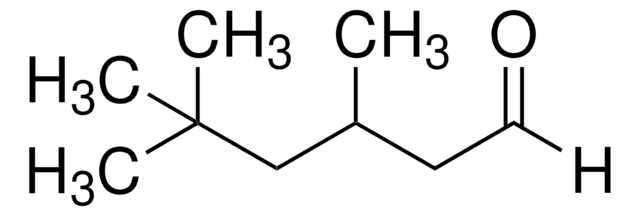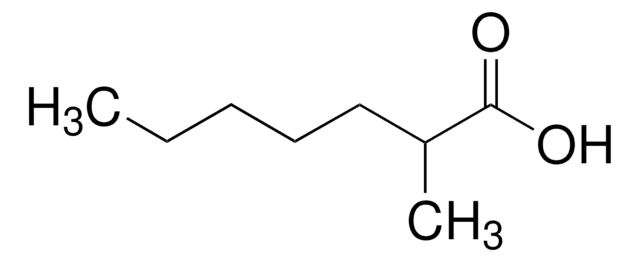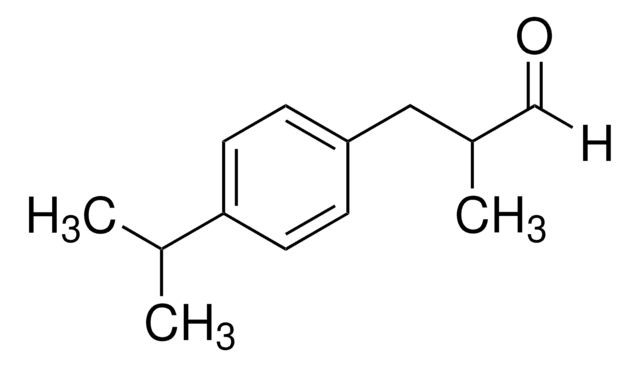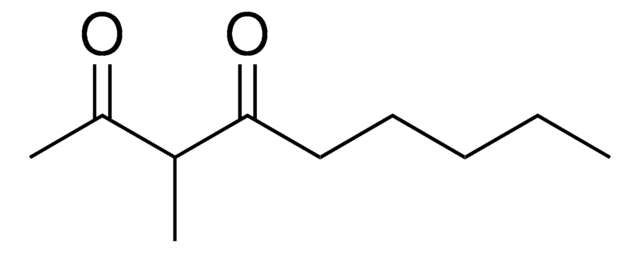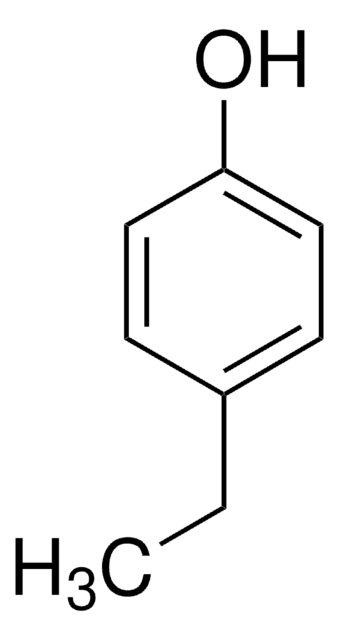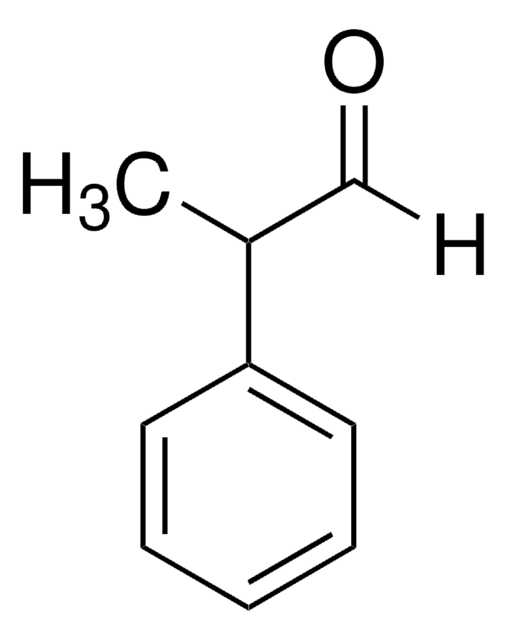W352403
3,5,5-Trimethylhexanal
≥95%, FG
Sinonimo/i:
Green hexanal
About This Item
Prodotti consigliati
Origine biologica
synthetic
Livello qualitativo
Grado
FG
Fragrance grade
Halal
Kosher
agenzia
follows IFRA guidelines
Conformità normativa
EU Regulation 1223/2009
EU Regulation 1334/2008 & 178/2002
Saggio
≥95%
Indice di rifrazione
n20/D 1.421 (lit.)
P. eboll.
67-68 °C/2.5 mmHg (lit.)
Densità
0.817 g/mL at 25 °C (lit.)
applicazioni
flavors and fragrances
Documentazione
see Safety & Documentation for available documents
Allergene alimentare
no known allergens
Allergene in fragranze
no known allergens
Organolettico
earthy
Stringa SMILE
CC(CC=O)CC(C)(C)C
InChI
1S/C9H18O/c1-8(5-6-10)7-9(2,3)4/h6,8H,5,7H2,1-4H3
WTPYRCJDOZVZON-UHFFFAOYSA-N
Cerchi prodotti simili? Visita Guida al confronto tra prodotti
Categorie correlate
Descrizione generale
Applicazioni
- Analysis, occurrence and potential sensory significance of aliphatic aldehydes in white wines.: Culleré et al. (2011) explore the presence and sensory impact of aliphatic aldehydes, including 3,5,5-trimethylhexanal, in white wines. The study highlights the role of these compounds in contributing to the aroma and flavor profiles of wines, emphasizing their importance in food chemistry and sensory science (Culleré et al., 2011).
Avvertenze
Warning
Indicazioni di pericolo
Consigli di prudenza
Classi di pericolo
Aquatic Chronic 3 - Flam. Liq. 3 - Skin Irrit. 2 - Skin Sens. 1
Codice della classe di stoccaggio
3 - Flammable liquids
Classe di pericolosità dell'acqua (WGK)
WGK 1
Punto d’infiammabilità (°F)
93.2 °F - closed cup
Punto d’infiammabilità (°C)
34 °C - closed cup
Dispositivi di protezione individuale
Eyeshields, Faceshields, Gloves, type ABEK (EN14387) respirator filter
Certificati d'analisi (COA)
Cerca il Certificati d'analisi (COA) digitando il numero di lotto/batch corrispondente. I numeri di lotto o di batch sono stampati sull'etichetta dei prodotti dopo la parola ‘Lotto’ o ‘Batch’.
Possiedi già questo prodotto?
I documenti relativi ai prodotti acquistati recentemente sono disponibili nell’Archivio dei documenti.
Il team dei nostri ricercatori vanta grande esperienza in tutte le aree della ricerca quali Life Science, scienza dei materiali, sintesi chimica, cromatografia, discipline analitiche, ecc..
Contatta l'Assistenza Tecnica.
